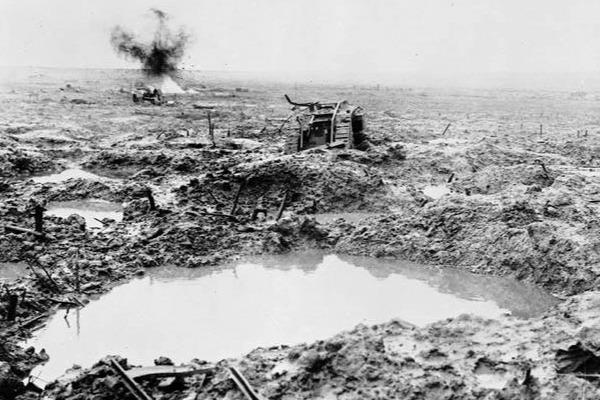Soils and Warfare
Soil is evident in the art, literature, and music of our cultures, and is also present in the worse: warfare. Most battles are fought on the soil. Most of the time, the soil is not very important in battle strategy, but there are several battles where the soil properties have been important to the success of certain battles and maneuvers.
The battle of Agincourt (1415) may best be known as the stunning defeat of the French forces by the English using the longbow. The terrain was very important. The fields on the front lines were recently tilled (plowed) and were wet from rains. As the French Army advanced, the fields turned to mud, and the French Soldiers in their heavy plate mail sank to their knees. This made them vulnerable to barrage of English arrows, and prevented the French from retreating, allowing the English to surround them.
During the trench warfare in World War I, fighting on reclaimed wetlands in Belgium turned ugly. Heavy bombing, soils that were saturated, and torrential rain created large, deep mudpits. When cannons were fired, they sank! Wounded men actually drowned in the mud, and made it impossible for men to get to doctors.

A damaged tank on the muddy Passchendaele battlefield.
Photo: Library and Archives Canada PA-002195
Mud is not the only problem during war; dust from dry soil can affect maneuvers on land and in the air. Dust can hide armies and targets in large clouds, spread diseases, and alrent sentries of approaching enemies. A tanks life span is cut in half in the desert, because dust and sand damage the machinery.



